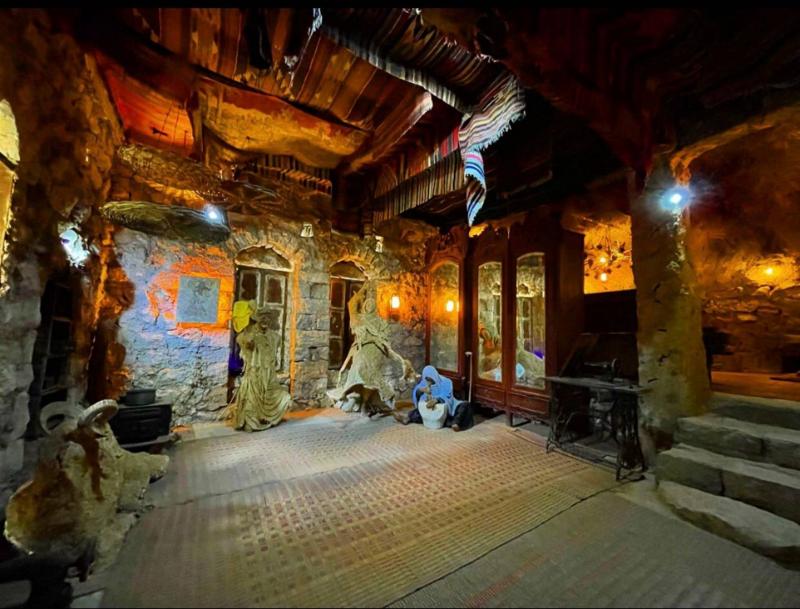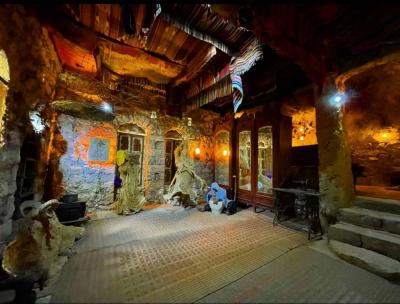"We are witnessing another Moses in architecture, with greater diversity in arts and a variety of expression techniques," described writer Salman Zain Al-Din the artist Gandhi Bou Diab, who transformed forgotten vaults into artistic and cultural oases, spaces brimming with life, music, and heritage.
In the village of Jahlia in Shouf, three decades ago, the journey of a talented young man began, who loved writing as much as sculpting and painting. He discovered in his village a cave dating back to the Ottoman era, approximately 400 years old, consisting of three adjoining vaults covering an area of 1500 square meters, along with the surrounding heritage garden. He then embarked on the restoration of the cave, only to discover an additional narrow cave with walls two meters wide and a height of one and a half meters. He worked on digging the rock to a depth of one and a half meters in an artistic manner that helped open up the space without affecting its twisted rocky floor.
After years of effort and hard work, these heritage vaults transformed into the current "Cave of Arts," adorned with Gandhi's oil paintings, most of which were inspired by the life, characters, and customs of the Lebanese village, in addition to artistic sculptures and models created from the roots of ancient trees, which he turned into expressionist artworks.
However, Gandhi did not stop there; he still dreams of future projects that will make the "Cave of Arts" a space free from boredom and routine. Nearly every day, he builds a stone wall, a dirt path, or an ancient fireplace. He has completed a new vault designed like a train, with openings in the ceiling resembling chimneys, equipped with colored glass that reflects sunlight and colorful light into the interior.
Additionally, there are stone tunnels, earth tunnels, and corridors made of mountain stone, leading to a library that has become a cultural hub for collecting literary and intellectual encyclopedias, as well as a venue for cultural, musical retreats, and more.
One cannot visit the "Cave of Arts" without tasting the dishes of the Lebanese village, and for this purpose, he built earth ovens for grilling and cooking village dishes and manakish. Furthermore, he planted fruit trees in the cave's garden and its surroundings, amidst a diverse environment that includes about 40 types of trees and plants.
What enhances the beauty and diversity of this place is the fish farms that Gandhi ensured to leave a warm space for among these natural and artistic treasures. There is truly something worth visiting for what an artist accomplishes with individual capabilities and rare talent, and most importantly, the strong will to innovate despite all the crises the country endures, representing a courageous model of resilience through art, construction, culture, and beauty, regardless of the circumstances.




